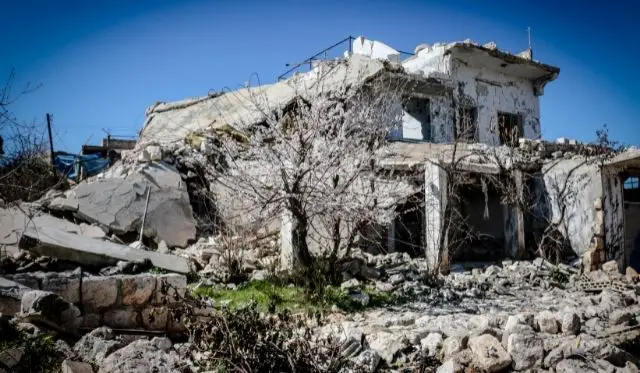Living in California, you may be used to earthquakes but be a little blase about them, or if you’re visiting, you may be afraid you’ll be stuck there during a major earthquake that rattles your hotel. No matter what, it’s a fact that California is known to be under constant attack from earthquakes.
You need to be aware of what to do and how to deal with an earthquake in California if it happens while you’re there.

1. What is an earthquake?
An earthquake is simply the earth below us shaking. This shaking is due to the parts of the earth’s outermost layer breaking and moving. This can result in small earthquakes that are not noticeable to humans, resulting in massive earthquakes that cause a lot of damage.
2. How often do earthquakes happen in California?
California experiences an earthquake every 3 minutes. You just aren’t feeling them all the time. Southern California, an area that experiences a large majority of them, has around 10,000 earthquakes every year.
3. Why is California more prone to earthquakes?
The San Andreas fault runs through about 800 miles of California, which is the most significant cause of earthquakes in that region. A fault is where two underground masses rub up against each other; in this case, it’s the base of the Pacific Ocean and North America.
4. Are the earthquakes in California always big?
The majority of earthquakes in California are minor and cause little to no damage. However, the problem is there are so many, and the risk is always present that a big one can hit, unlike in other regions that have no earthquakes at all.
5. When was the last big earthquake in California?
In July 2019, the Ridgecrest area of California was shaken by back-to-back earthquakes. First a 6.4 earthquake on the Richter scale, then followed a day later by a 7.1 earthquake. From the earthquake and resulting fires, the estimated cost was around $100 million in damages.
Many large earthquakes will have one or more aftershocks, so be prepared if you’re ever in a large earthquake, as another may be coming shortly after.
6. Is there a massive earthquake predicted for California?
It’s impossible to predict when or where a big earthquake will hit, only that it’s possible to happen at any moment with seismic activity constantly happening in California.
Scientists even suggest that the biggest faults aren’t necessarily going to be the cause of the next quake if, in another area, many smaller faults can “link up” to spark a major earthquake. For example, the last big earthquake in California brought awareness to many smaller faults that hadn’t been known about before that contributed to that earthquake.
7. What would happen if the San Andreas fault cracked?
The San Andreas fault is the most significant fault zone in California. If it cracked, we could see deaths and people injured in the thousands, and damages up to $214 Billion due to the quake reaching and damaging every city in southern California.
8. How is California prepared for earthquakes?
In 2015, California enacted seismic regulations and ordered 14,000 buildings to be retrofitted to withstand violent shaking caused by earthquakes. This process is expected to be completed by 2022, which didn’t fully help during the last big earthquake in 2019.
California has also implemented an early warning system, which may only give you an additional 30 seconds to 2 minutes warning. But this gives you a small amount of time to move out of the way of anything that could be a significant problem to you during an earthquake, which is better than nothing and the best advance warning we can do right now.
9. How should I prepare for an earthquake?
Make sure everything in your house is secured to walls, such as bookcases and cabinets. Keep heavy items on low shelves. Ensure you have some nonperishable food items and bottled water for your family for at least three days.
10. Should you stand in a doorway during an earthquake?
You used to be taught to stand in a doorway during an earthquake, but this is no longer true. A doorway is no more sturdy than the rest of your house and may even be more dangerous due to buckling and twisting now.
The best place to be would be under some sturdy furniture close to a wall and away from any windows. Make sure you are on your knees and tucked to protect your vital organs.
11. Which was the deadliest earthquake in California?
There have been many deadly earthquakes in California, unfortunately. For example, the 1989 San Francisco earthquake had 63 deaths directly from the earthquake. However, the 1906 San Francisco earthquake had close to 3000 deaths which were attributed to the earthquake and resulting fires.
12. Which part of California has the most earthquakes?
San Francisco has the most earthquakes in California as it sits right on the San Andreas fault. It’s also predicted to have more large earthquakes soon.
13. Does the ground open up during an earthquake?
The earth can crack but not as you see in the movies. Earthquakes can also cause liquefaction, where the shaking can change the soil beneath buildings and cause damage to them.
14. Will California really fall into the ocean?
Many people wonder if part of California could crack and drop into the Pacific Ocean; however, this is not a reality. No size of earthquake could make California drift away into the Pacific Ocean.
15. Which government agency will go into action during a major earthquake?
The Federal Emergency management Agency (FEMA) would start working to coordinate emergency response after a major earthquake that has caused significant damage and infrastructure issues.
16. How long could I be waiting for help after a major earthquake?
It all depends on the quake’s size and how much damage has been caused; however, emergency preparedness suggests three days’ worth of food and water as that is how long you can expect to look after yourself. However, this could be longer if there are issues or the damage is extreme.
17. Can animals predict earthquakes?
It’s unknown why and there is no hard science behind it, but animals do appear to act differently leading up to major earthquakes. Many scientists in China and Japan are pursuing this research but have yet to establish how or what animals are reacting to.
18. Are humans doing anything to make earthquakes worse in California?
Not all earthquakes are natural, and some are directly caused by human activities such as mining, daming, and fracking. So it isn’t that we are making them worse, it’s that we as humans are actually making earthquakes now.
19. Does climate change increase earthquake risk?
Studies haven’t been completed yet, but there is some evidence that specific climate or weather-related activities could impact the likelihood of earthquakes; not necessarily cause large earthquakes but could still be a contributing factor. Such as an area that has an extended period of drought and then heavy rainfall leading to a fall and then rise in the area.
20. Could the Golden Gate Bridge collapse during an earthquake?
If there was a magnitude 8.0 earthquake near the Golden Gate Bridge, it could collapse or have significant damage. However, there is an ongoing retrofit activity to make the bridge more stable and resistant to collapse from earthquakes; as this activity progresses, the likelihood decreases.
Final Thoughts
The key takeaways from this should be that California, especially Southern California, constantly has earthquakes, and a huge one is expected in the next few decades. Being prepared is essential because you may be on your own for at least three days or more. The best place to be is inside your home, under sturdy furniture, and away from windows.


